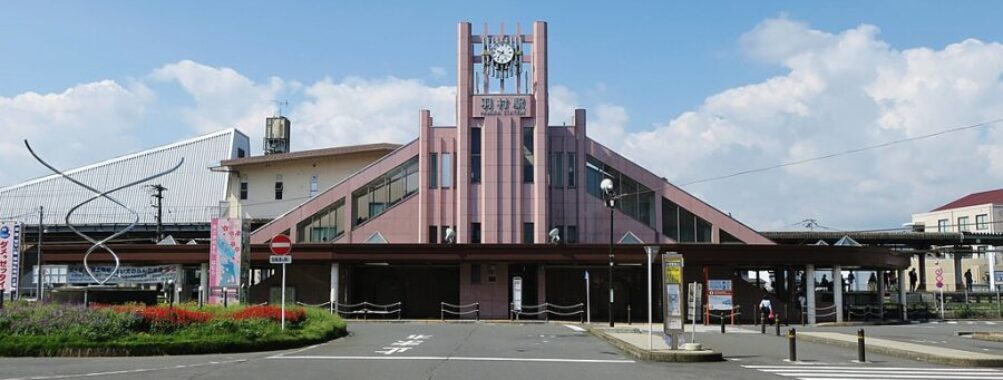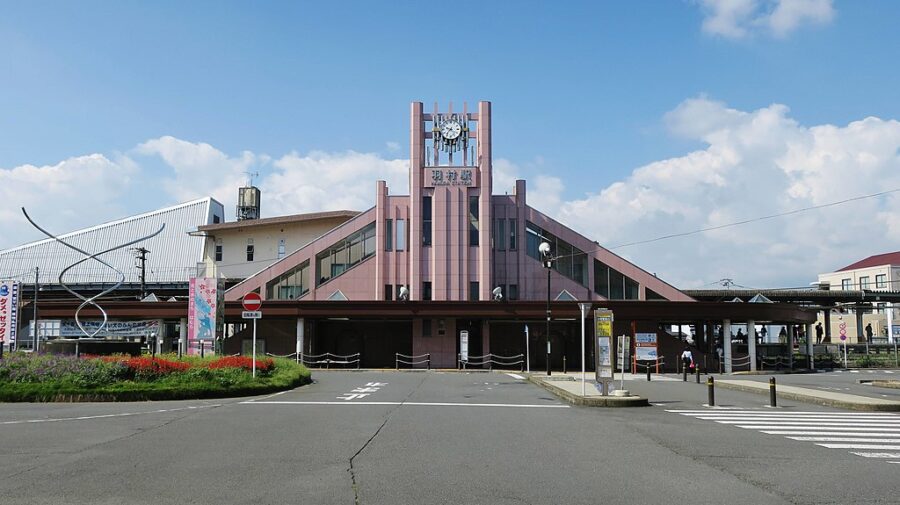
Hamura Station
Table of Contents
History and Significance

Hamura Station opened its doors to the public in 1931, contributing to the development of the surrounding area. Initially, it served as a key point for agricultural transport, helping local farmers get their produce to market. Over the decades, as Tokyo expanded, Hamura evolved into a residential area, making the station increasingly vital for daily commuters. Its historical significance lies not only in its role in local transportation but also in its connection to the broader developments in Japan’s railway network. Today, it stands as a testament to the growth of the JR East line and the community it serves, with a timetable that accommodates the busy lives of its passengers.
As part of the JR East network, Hamura Station has played a crucial role in connecting residents to major urban centers in Tokyo. The station’s establishment coincided with significant advancements in Japan’s railway system, which transformed the way people traveled. This historical backdrop enhances the significance of Hamura Station, making it a noteworthy stop for those interested in the evolution of transportation in Japan. Even now, the station embodies the charm of traditional Japanese railway stations while adapting to modern demands, creating a unique blend of history and functionality that attracts visitors from various walks of life.
Main Attractions and Activities
Once you step out of Hamura Station, you’re greeted by a vibrant mix of attractions that cater to different interests. One of the most notable places nearby is the Hamura Zoo, where families can enjoy a day out observing various animals and participating in educational activities. Additionally, the stunning scenery along the Tama River offers perfect spots for picnicking, walking, and cycling, ensuring that outdoor enthusiasts have plenty of options to explore. The local parks, like Hamura Park, feature beautiful cherry blossoms in spring, making it a popular destination for hanami (flower viewing) enthusiasts.
Another gem in the vicinity is the Hamura City Museum, where visitors can delve into the local history and culture through engaging exhibits. It’s a great way to understand the area’s past, including its agricultural roots and the transformation it has undergone over the years. For those who appreciate shopping, the small local markets near the station offer unique handicrafts and fresh produce, allowing visitors to experience the local lifestyle. With so many activities to engage in, Hamura Station serves as a perfect starting point for a memorable day of exploration.
Visitor Experience
Visitors to Hamura Station often remark on the warm, welcoming atmosphere that envelops the area. When you arrive, you can feel the blend of urban convenience and rural charm, making it a delightful escape from Tokyo’s hustle and bustle. The station itself, though modest, provides all the necessary amenities, including ticket machines and information desks, ensuring that travelers have a smooth experience. The helpful staff members are always ready to provide information on train schedules, making it easy to plan your next move in this delightful part of Japan.
As you wander around Hamura, you’ll notice the friendliness of the locals, who are often eager to share recommendations about the best places to visit. This community spirit adds to the overall visitor experience, allowing you to feel connected to the culture of the area. Whether you’re enjoying a stroll along the river or sipping coffee at a local café, the genuine hospitality of Hamura enhances your journey. With its inviting vibe and array of engaging activities, Hamura Station truly offers a unique visitor experience that leaves a lasting impression.
Tips for Visitors
If you’re planning to visit Hamura Station, there are a few tips to make your trip even more enjoyable. First, check the JR East timetable in advance to avoid any surprises with train schedules. Depending on the time of day, train frequencies can vary, so being prepared will help you make the most of your visit. Additionally, consider visiting during the cherry blossom season in spring or the vibrant autumn months to fully appreciate the natural beauty surrounding the station.
Another tip is to bring some cash, as some local shops and eateries may not accept credit cards. Exploring the nearby markets is a must, so having some yen on hand will allow you to indulge in local delicacies and unique souvenirs. Lastly, don’t hesitate to interact with residents; they are often happy to provide insights and recommendations on hidden gems around Hamura. Following these tips can greatly enhance your experience, ensuring that your visit to Hamura Station is both memorable and fulfilling.
Accessibility and Facilities
Hamura Station is designed to be accessible, providing facilities that cater to all types of travelers. The station features ramps and elevators, making it easy for those with mobility challenges to navigate without hassle. Additionally, the layout is user-friendly, with clear signage in both Japanese and English, helping international visitors find their way around. The station’s amenities include waiting areas and restrooms, ensuring that travelers have a comfortable experience while they wait for their trains.
Furthermore, the proximity of Hamura Station to local attractions enhances its accessibility. Public transportation options such as buses and taxis are readily available, allowing visitors to explore the wider area with ease. For families traveling with children, the station’s facilities make it convenient to manage strollers and other gear. Overall, Hamura Station prioritizes accessibility and visitor comfort, making it a reliable point for travelers venturing into the heart of Tokyo’s countryside.
Unique Features
What sets Hamura Station apart from other stations in the Tokyo area is its unique blend of historical charm and natural beauty. The station is surrounded by lush greenery, providing a refreshing contrast to the urban environment typically found in Tokyo. This natural setting makes Hamura a peaceful retreat for those looking to escape the city’s hustle and bustle. The architecture of the station itself reflects a traditional Japanese aesthetic, further enhancing its appeal and offering a glimpse into the country’s rich railway history.
Additionally, Hamura Station is home to a few unique local eateries that serve traditional Japanese cuisine, allowing visitors to indulge in authentic flavors. These dining options often feature seasonal ingredients sourced from the surrounding area, providing a culinary experience that’s as memorable as the sights. The blend of historical significance, natural surroundings, and local culture creates a unique character for Hamura Station, making it a charming stop on your journey through Japan.
Overall Impressions
In summary, Hamura Station offers a delightful experience for any traveler exploring the Tokyo area. The station’s historical significance, combined with its accessible facilities and surrounding attractions, makes it a worthwhile stop. Visitors are often impressed by the friendly locals and the overall welcoming atmosphere that characterizes Hamura. Whether you’re a history buff, nature lover, or simply passing through, Hamura Station provides a perfect blend of culture and convenience that leaves a lasting impression.
The combination of natural beauty, local charm, and engaging activities ensures that your time spent in Hamura will be enjoyable and enriching. The station serves as an excellent base for exploring the surrounding areas, encouraging visitors to take their time and discover all that this quaint location has to offer. Overall, Hamura Station is not just a transit point; it’s a memorable destination in itself, making it a must-visit for anyone traveling through Japan.
Pros and Cons
Like any destination, Hamura Station comes with its own set of pros and cons. On the positive side, the station’s location provides easy access to beautiful parks, local markets, and attractions like the Hamura Zoo. The friendly atmosphere and helpful staff make it a welcoming place for visitors, and the surrounding natural beauty enhances the overall experience. Moreover, the convenience of the JR East line allows for seamless travel to other parts of Tokyo, making it an ideal starting point for day trips.
However, there are a few drawbacks to consider. As a smaller station, Hamura may not have the extensive facilities found in larger urban stations, which may limit dining and shopping options. Additionally, while the area is charming, it may not offer the same level of excitement or nightlife as central Tokyo. Understanding these pros and cons can help you plan your visit to Hamura Station effectively, ensuring that you have a well-rounded experience that meets your travel expectations.
Location
Places to Stay Near Hamura Station
Find and Book a Tour
Explore More Travel Guides
No reviews found! Be the first to review!